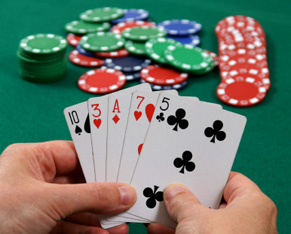 Becoming a professional poker player online, in the simplest form, means that you want to earn a living by playing poker. Do not be confused by the notion that a professional poker player is one who wins every time, that simply is not true. A professional in any field is merely a person who makes a living off of their chosen profession.
Becoming a professional poker player online, in the simplest form, means that you want to earn a living by playing poker. Do not be confused by the notion that a professional poker player is one who wins every time, that simply is not true. A professional in any field is merely a person who makes a living off of their chosen profession.In the case of becoming an online professional poker player, you want to learn how to 'make a living' playing poker. That task is actually easier than one may think if you have the discipline to apply certain strategies and set certain goals and boundaries.
The first step, and likely the easiest, is to learn the basics of the game. Once you understand the basic concept of the game, you can take it to the next level and begin to learn poker strategy. A convenient way to learn the basics of the game is to play online poker at one of the many poker sites on the Internet.
As you progress in learning the basics, you can begin to use poker strategies that will help your game. However, the strategies are not as important as learning how to maintain your bankroll. If you intend to remain a professional, you must also maintain a reserve of cash to continue in your venture as a professional poker player.
A few other important disciplines in becoming a professional Poker Player is to learn:
One of the biggest misconceptions is that a professional will always win, that is hardly true as anyone can see a professional in any sport does not always win, however the key is consistency. A good professional will cash about 1 out of 5 times or 20% of the time. This means that out of every 5 sessions or tournaments you play you should make a profit.
The key to becoming a professional poker player online is to win consistently. If you lose too often, you will blow your bankroll and have nothing more to continue as a professional poker player. This is the reason it is very important to learn how online poker sites work, how to manage your bankroll and poker strategies to avoid constant bad beats.


